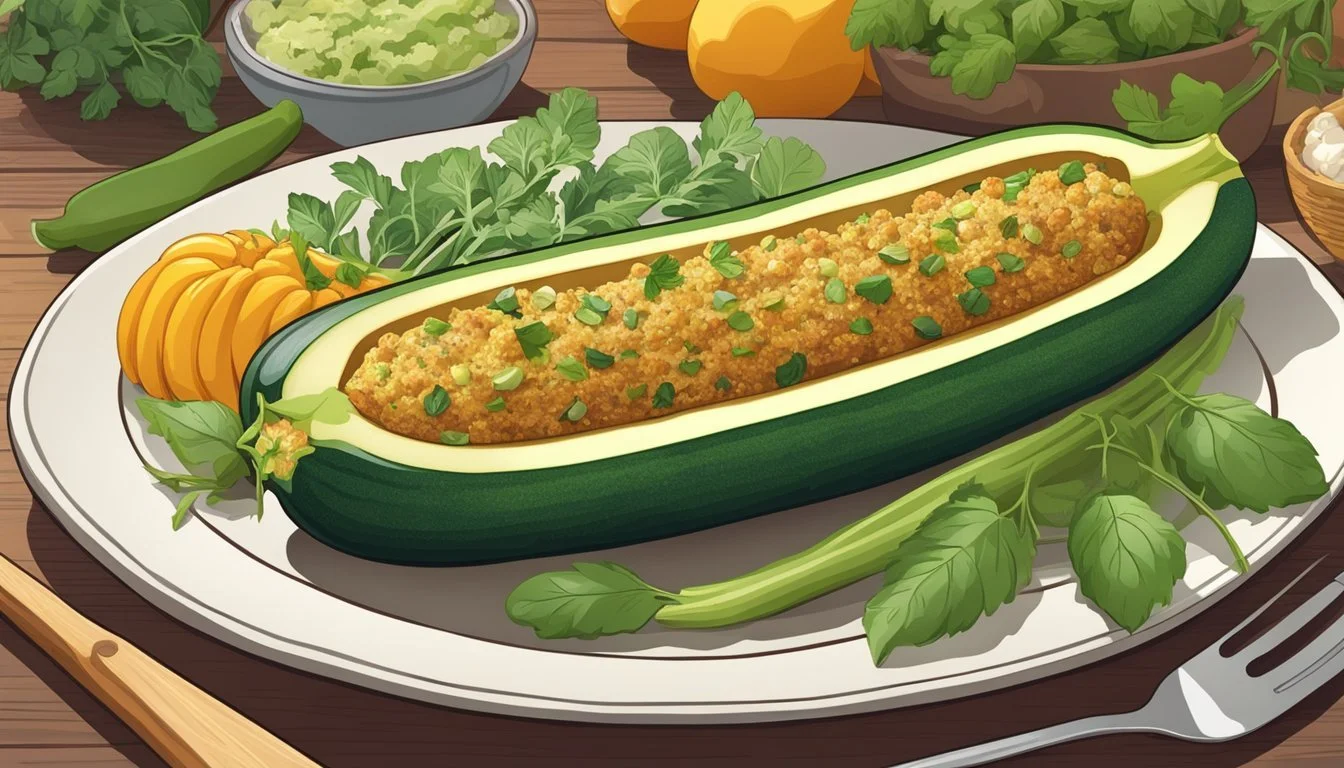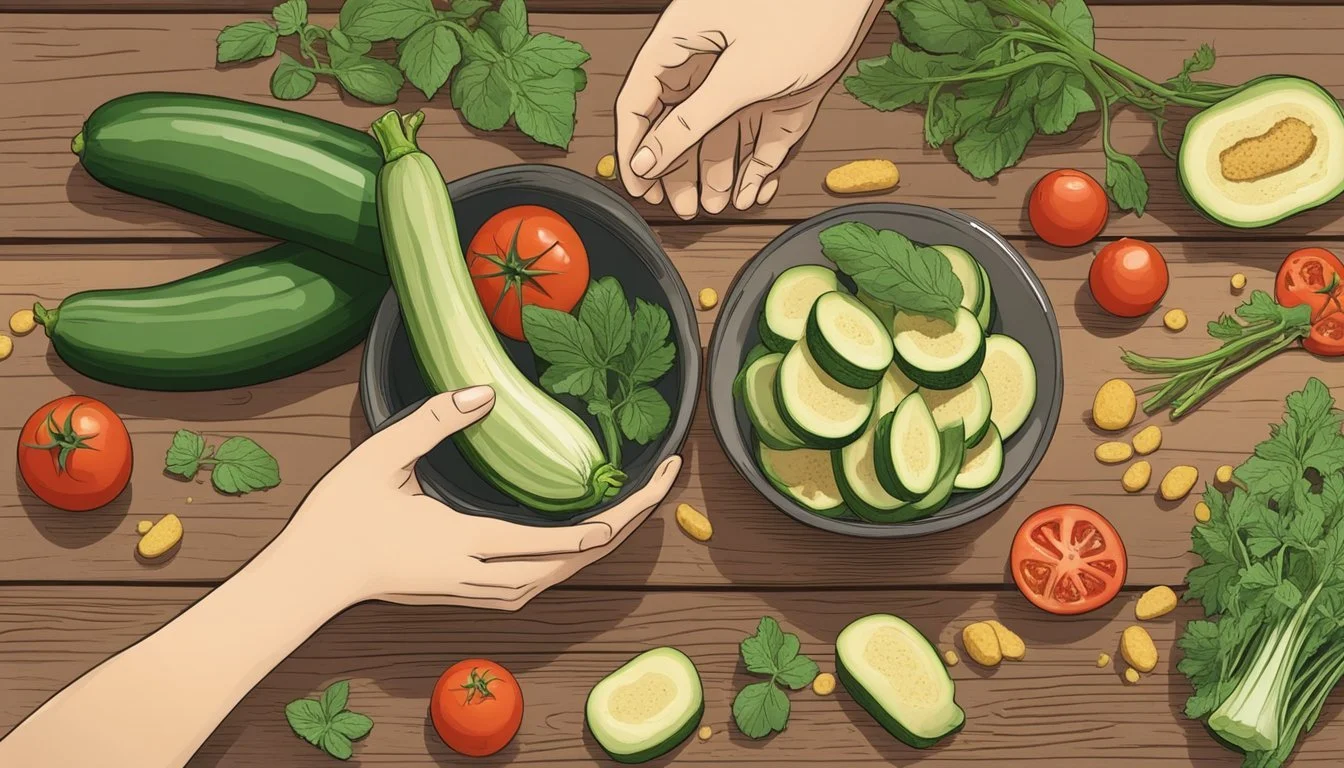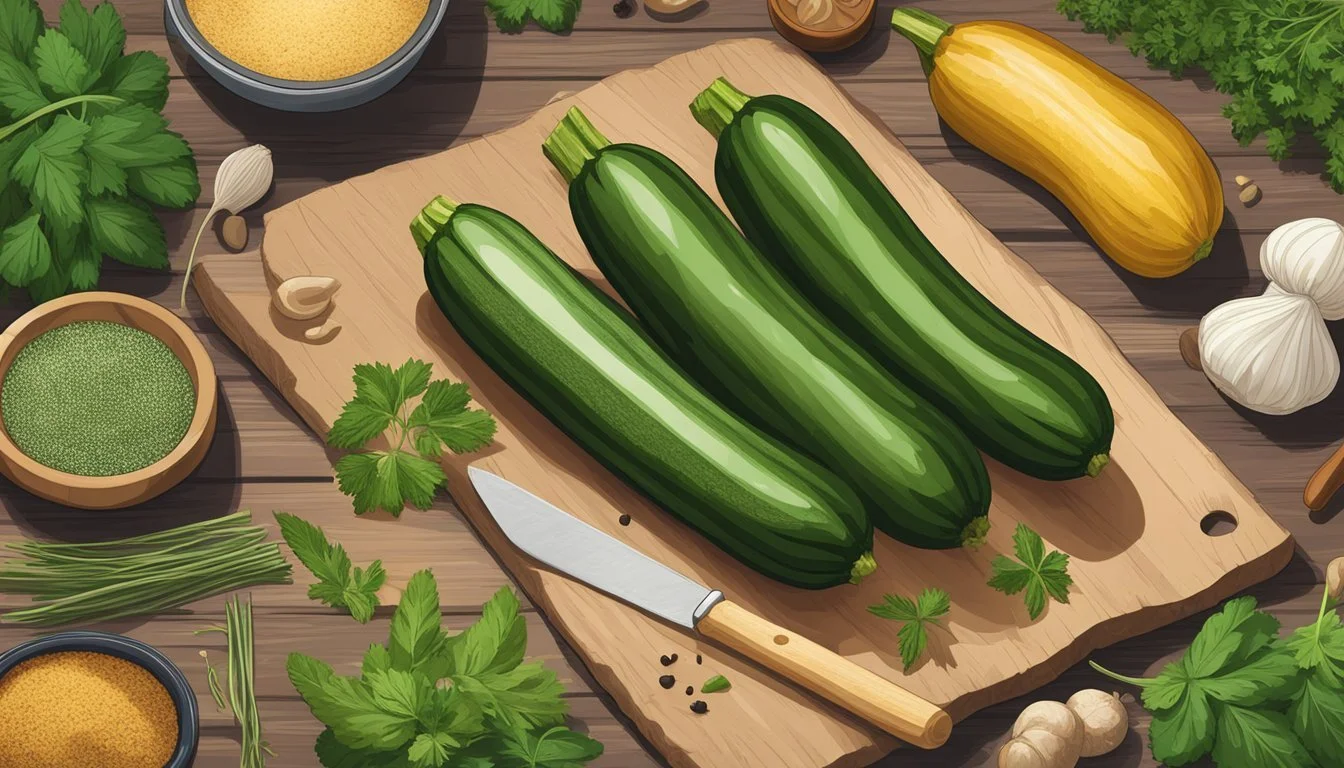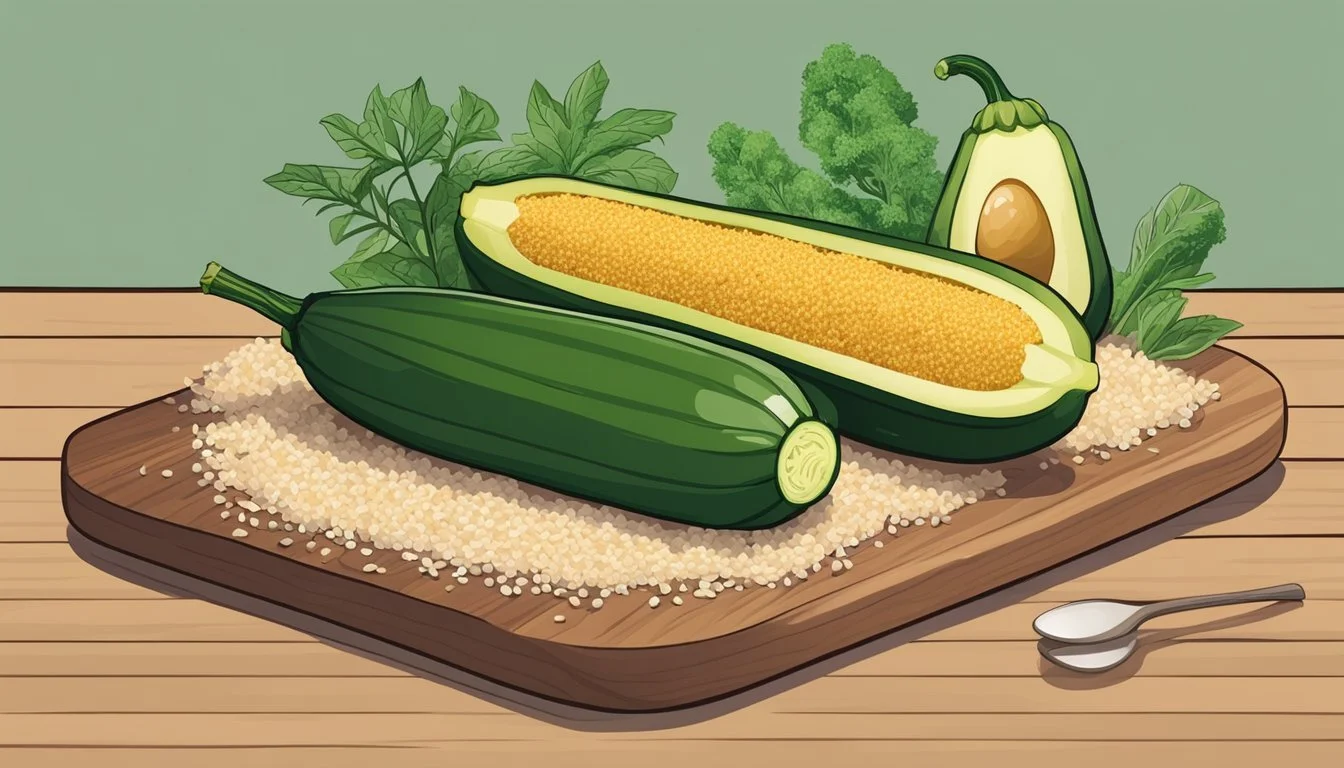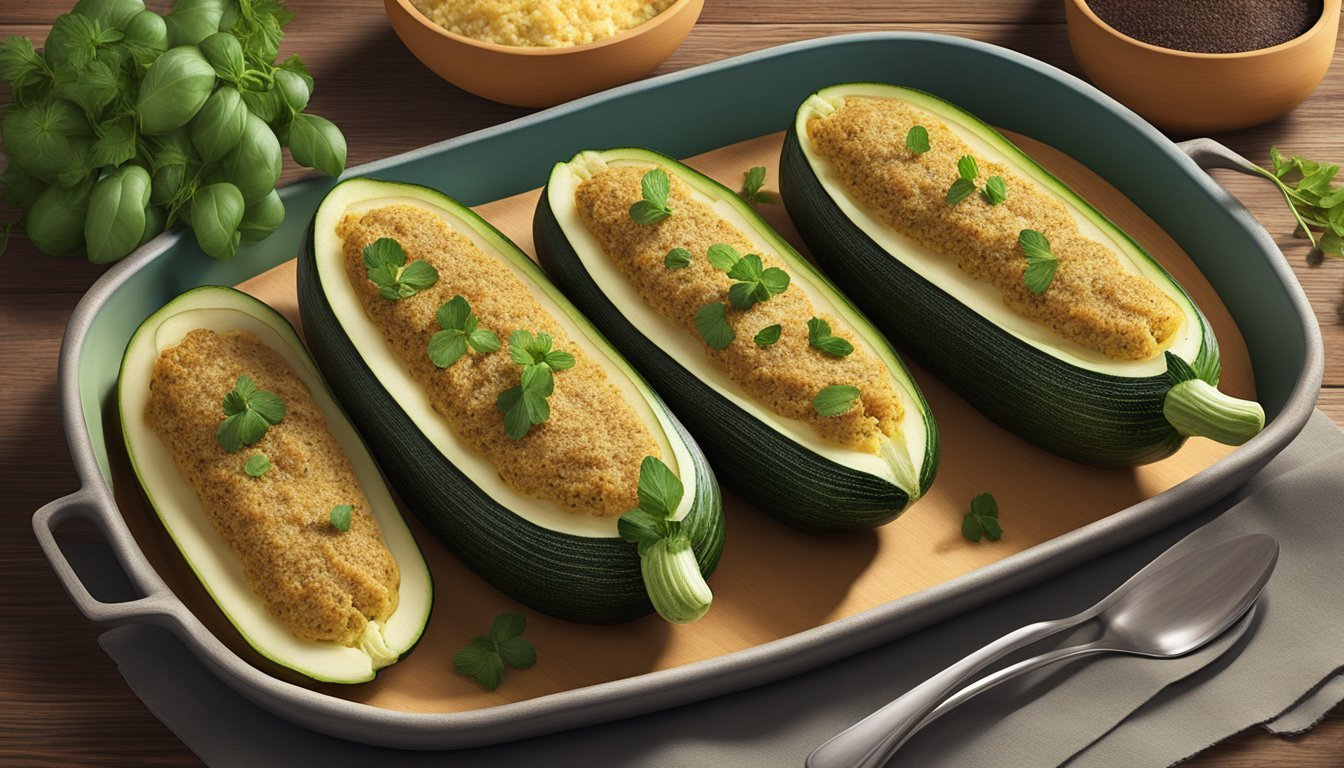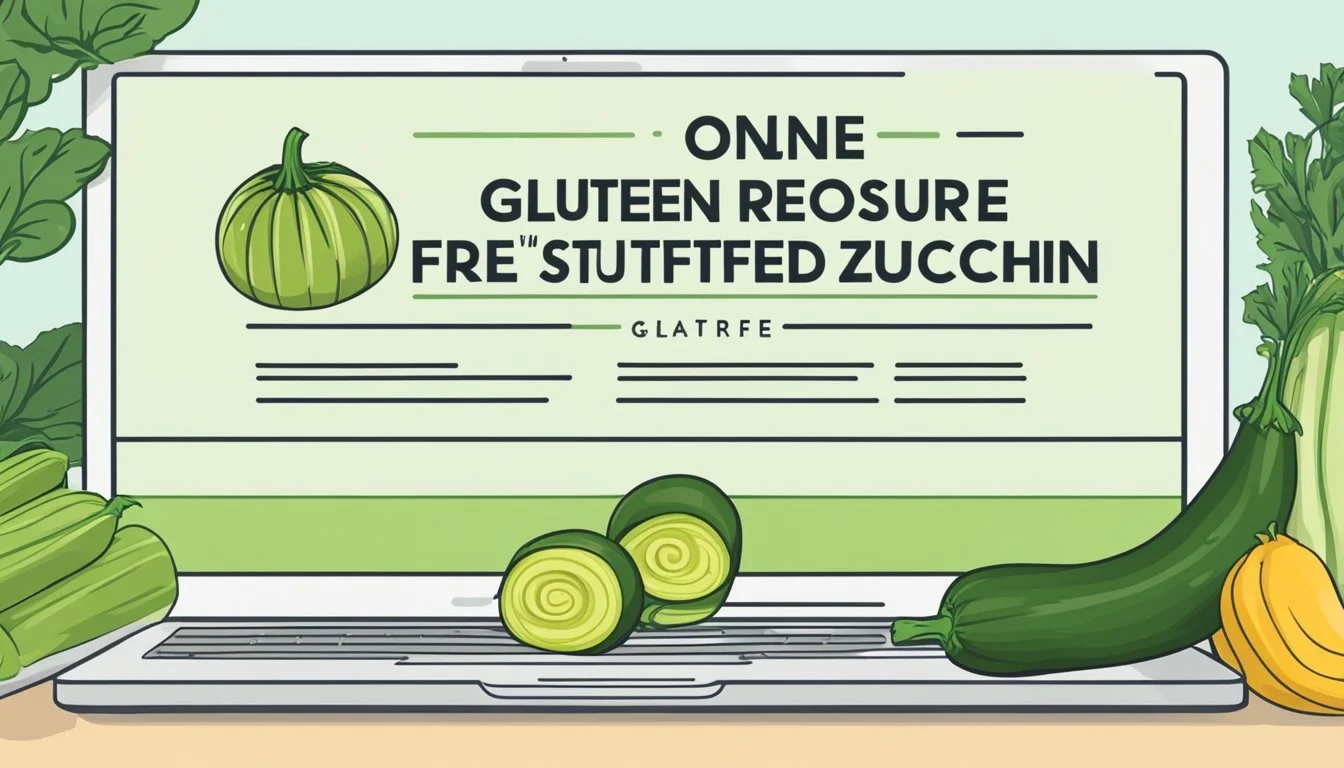How Long Does Gluten-Free Stuffed Zucchini Last?
Freshness Tips and Storage Guide
Gluten-free stuffed zucchini is a delightful main dish that offers both flavor and nutrition. When properly stored, it can extend the culinary experience beyond the initial meal. Gluten-free stuffed zucchini typically lasts about 3 to 4 days in the refrigerator, ensuring it remains fresh and safe to eat. This makes it an excellent option for meal prepping and enjoying a healthy meal throughout the week.
Stuffed zucchini recipes are versatile and can be customized with various fillings, such as sausage, vegetables, risotto, or even vegan alternatives. Preparing this main dish ahead of time can save effort on busy days while still providing a satisfying and gluten-free option. Ensuring the stuffed zucchini is stored in an airtight container can help maintain its freshness during this period.
Whether you've made a Greek-inspired zucchini boat or a Mediterranean gluten-free version, knowing how long it can last is crucial for planning meals. With the right storage techniques, these delicious stuffed zucchinis can be a convenient and scrumptious part of your weekly meal rotation.
Understanding Gluten-Free Diets
A gluten-free diet is essential for individuals with celiac disease and gluten sensitivity. It involves avoiding foods that contain gluten, a protein found in wheat, barley, and rye.
Health Benefits of Gluten-Free
Switching to a gluten-free diet can lead to numerous health benefits for those who are sensitive to gluten. People with celiac disease can experience reduced inflammation, improved nutrient absorption, and enhanced digestive health.
A gluten-free diet can also alleviate symptoms such as bloating, diarrhea, and skin conditions like dermatitis herpetiformis. Additionally, many gluten-free foods are rich in fiber and other nutrients, contributing to overall health improvements.
For those without gluten sensitivity, however, there is no substantial evidence that a gluten-free diet offers health benefits.
Ingredients to Avoid in Gluten-Free Cooking
For a successful gluten-free diet, it's crucial to avoid specific ingredients commonly found in many foods. Wheat, barley, and rye are the primary sources of gluten and should be excluded from the diet. Foods such as pasta, bread, and stuffing mix need to be approached with caution, ensuring they are labeled gluten-free.
Beyond these grains, it's important to be aware of cross-contamination risks. Cooking utensils, cutting boards, and storage containers must be kept separate from those used for gluten-containing foods to prevent accidental exposure. Reading labels diligently for hidden gluten ingredients, like certain additives and preservatives, is also essential to maintain a gluten-free diet.
Selecting Quality Ingredients for Stuffed Zucchini
Quality ingredients are crucial for delicious gluten-free stuffed zucchini. Focus on selecting the best zucchinis, complementary vegetables, and proteins to create a flavorful and satisfying dish.
Best Zucchinis for Stuffing
Select medium-sized zucchinis for stuffing. These zucchinis hold their shape better and provide ample space for fillings. Look for zucchinis with a uniform dark green color and smooth, firm skin.
Avoid zucchinis with soft spots, blemishes, or an overly wrinkled appearance. Fresh zucchinis have a slightly glossy skin and feel heavy for their size. For the best flavor, choose zucchinis that are about 6-8 inches long.
Choosing Complementary Vegetables
Complementary vegetables enhance the stuffing's flavor and texture. Onion and garlic provide a savory base, while tomatoes add moisture and acidity. Yellows onions are commonly used for their balanced sweetness.
Consider adding bell peppers for a crunch, and corn kernels to introduce a slight sweetness. These vegetables should be fresh and free from any blemishes. Dice them finely so they integrate well with the stuffing mix.
Proteins That Elevate the Dish
Proteins add substance and flavor to stuffed zucchinis. Ground beef, lean ground beef, and sausage are popular choices. Italian sausage, removed from its casing, adds robust flavor and a slight spice.
For a lighter option, consider using bison or turkey. Cook the proteins thoroughly and crumble them finely to mix well with the vegetables and seasonings. Season with salt, pepper, and Italian seasoning for a balanced taste.
Creating the Perfect Gluten-Free Stuffing
Creating a gluten-free stuffing requires choosing the right alternatives and combining flavors and spices to enhance the dish without compromising on taste.
Gluten-Free Stuffing Alternatives
Using gluten-free bread is crucial. Opt for a 24oz loaf of gluten-free bread, cubed into bite-sized pieces. For added fiber, consider bread made from oats or mixed grains.
Parmesan cheese is a delightful addition, providing a creamy texture. Gluten-free bread crumbs can replace regular ones, ensuring the stuffing holds together.
Incorporate olive oil instead of butter for a dairy-free variation. Keep the bread cubes slightly toasted, either in a 225°F oven for 30-40 minutes or a 300°F oven for 30-35 minutes. Stir every 10 minutes to ensure even dryness.
Mixing Flavors and Spices
A combination of fresh herbs such as parsley, basil, thyme, rosemary, and sage enriches the stuffing's taste. Add minced garlic to a skillet with olive oil and sauté celery and onions until soft. Season with Italian seasoning, salt, and pepper.
When mixing, include melted butter or extra olive oil, and a bit of broth for moisture. For a burst of freshness, garnish with chopped fresh basil.
Proper flavoring ensures the stuffing complements the main dish, especially during festive meals.
Gluten-Free Stuffed Zucchini Preparation
Proper preparation of gluten-free stuffed zucchini ensures that the final dish is flavorful and enjoyable. Key steps involve oven preparation for baking the zucchini boats and sautéing the ingredients to enhance the depth of flavor.
The Importance of Oven Preparation
Preparing the oven is crucial for achieving the desired texture of stuffed zucchini. Preheat the oven to 350 degrees F (175 degrees C).
Trim the zucchini stems and slice them lengthwise. Using a spoon, scoop out the seeds and flesh, leaving approximately 1/4 inch thick edges. Save the scooped-out flesh for the stuffing mixture. Place the zucchini halves skin side down in a baking dish or baking pan.
Drizzle with olive oil and season with salt and pepper before baking. Bake the zucchini for about 25-30 minutes until they are fork-tender. Proper preheating and preparation ensure even cooking.
Sautéing for Added Depth of Flavor
Sautéing the filling ingredients before stuffing the zucchini adds depth and enhances flavor. Heat olive oil in a skillet over medium heat. Add finely chopped onion and cook until soft and translucent, roughly 5 minutes.
Next, add minced garlic cloves and the reserved zucchini flesh. Continue sautéing for another 3 minutes. For a more savory stuffing, slip sausage out of its casing, crumble it, and cook until browned. Combine this with the sautéed vegetables, adding salt, pepper, and Italian seasoning to taste.
Mix the ingredients thoroughly before filing the zucchini boats. Sautéing ensures the stuffing is aromatic and flavorful, complementing the tender baked zucchini.
Baking and Final Touches
When baking gluten-free stuffed zucchini, paying attention to cooking time, temperature, and garnishing can make all the difference. Topping options such as mozzarella, parmesan, or dairy-free alternatives can add that perfect finishing touch.
Time and Temperature Guidelines
Preheat the oven to 375°F (190°C). Place the stuffed zucchini on a baking sheet lined with parchment paper. Bake for 25 to 30 minutes. The zucchini should be tender but still slightly firm.
Check for doneness by inserting a fork; it should go in easily. If the filling includes sausage or another meat, ensure it reaches an internal temperature of 165°F (74°C) using a meat thermometer. Adjust cooking time as needed for different oven types.
Cheese Selection for Topping
For a classic taste, sprinkle shredded mozzarella cheese on top of the zucchini before placing it in the oven. This will melt beautifully, adding a creamy layer. Consider parmesan cheese for a sharper flavor and a nice golden crust.
Garnishing for Presentation
To elevate the appearance, garnish the finished dish with fresh herbs. Chopped parsley, basil, or even a sprig of spring onion can add a pop of color and freshness. If the dish isn’t intended to be dairy-free, a light dusting of feta cheese can offer a tangy contrast.
Serve the zucchini boats on a platter, with additional garnishes like lemon wedges on the side. This not only makes the dish visually appealing but also enhances the taste experience for guests or family members.
Storage and Reheating Instructions
Proper storage and reheating of gluten-free stuffed zucchini are crucial for maintaining its flavor and safety. Follow these steps to keep your leftover stuffed zucchini fresh and delicious for future meals.
Optimum Refrigeration Practices
Place the cooked stuffed zucchini in an airtight container to allow minimal air exposure. This can be a glass or BPA-free plastic container with a tight-sealing lid. Mark the container with the date it was prepared to keep track of its freshness.
Store the container in the refrigerator at a temperature below 40°F (4°C). Properly stored, gluten-free stuffed zucchini can last up to 3-4 days in the fridge without compromising quality. Avoid storing it in the fridge’s door area where temperatures fluctuate more.
If you are planning to keep it longer, consider freezing. Wrap each stuffed zucchini tightly in aluminum foil and place them in freezer bags or containers. Frozen stuffed zucchini can last for up to 2-3 months. Always use a label to note the freezing date.
Best Methods for Reheating
Oven Method: Preheat the oven to 350°F (175°C). Place the stuffed zucchini in an oven-safe dish and cover with foil to retain moisture. Bake for 15-20 minutes until heated through. For a crispy finish, remove the foil in the last few minutes of baking.
Microwave Method: For a quicker option, use the microwave. Place the stuffed zucchini on a microwave-safe plate and cover with a microwave-safe lid or plastic wrap, leaving a small vent. Heat on high for 2-3 minutes, then check its temperature. Continue in 30-second intervals if it’s not thoroughly heated.
By following these methods, you can enjoy your gluten-free stuffed zucchini leftover while maintaining the dish's texture and flavor.
Pairing Suggestions for a Complete Meal
Pairing gluten-free stuffed zucchini with the right sides and beverages can enhance the dining experience. Consider both complementary side dishes and suitable drink options to create a balanced meal.
Matching Side Dishes
Garlic bread is a classic choice that pairs well with stuffed zucchini, especially when made gluten-free. Its crispy texture contrasts nicely with the soft zucchini.
For a vegetarian-friendly option, consider a salad of mixed greens and fresh vegetables like tomatoes, cucumbers, and bell peppers. This adds a refreshing crunch and additional nutrients.
Including a protein is important. Grilled chicken or roasted turkey can complement the zucchini without overpowering its flavors. For a vegetarian protein, try a quinoa salad mixed with black beans.
Sauces can elevate the dish further. A simple marinara sauce or a garlicky spaghetti sauce enhances the stuffed zucchini's taste. Drizzling it over the zucchini or serving it on the side for dipping provides an extra layer of flavor.
Wine and Beverage Pairings
Selecting the right beverage can further enhance the enjoyment of the meal. A light white wine like Pinot Grigio or Sauvignon Blanc pairs well with stuffed zucchini, balancing the flavors without overwhelming them.
For those who prefer non-alcoholic options, a sparkling water with a slice of lemon or lime offers a refreshing palate cleanser.
For a heartier pairing, consider a glass of iced tea with a hint of mint. This adds a refreshing touch and complements the savory flavors.
Tea can also be a good match, especially herbal varieties like chamomile or peppermint, which offer soothing and complementary notes without competing with the meal’s flavors.
Nutritional Information
Gluten-free stuffed zucchini offers a nutritious combination of low calories, fiber, and essential vitamins, while aiding in maintaining a balanced diet, especially for those with gluten sensitivities. Below, we break down its caloric content and highlight the fiber benefits.
Caloric Content Breakdown
Stuffed zucchini provides a balanced meal with several nutrients. Typically, one serving contains:
Calories: Around 200-300 calories per serving, depending on the filling ingredients such as cheese or meat.
Fat: Approximately 10-15 grams, with a small portion coming from saturated fats, especially if cheese or sausage is used.
Carbohydrates: Roughly 20-25 grams, mostly from the zucchini and any breadcrumb substitutes.
Protein: Typically 10-15 grams, derived from meat or plant-based protein sources included in the stuffing.
Benefits of Fiber in Gluten-Free Diets
Gluten-free stuffed zucchini helps meet daily fiber needs, vital for digestive health.
Fiber: Each serving generally offers 3-5 grams of fiber, which supports regular bowel movements and prevents constipation.
Digestion: Increased fiber intake aids in better digestion and can help maintain healthy gut bacteria.
Blood Sugar Control: Fiber slows sugar absorption, which can help keep blood sugar levels stable.
Cholesterol: Consuming adequate fiber has been linked to lower cholesterol levels, thus benefiting heart health.
Incorporating fiber-rich stuffed zucchini into a gluten-free diet can provide critical nutritional benefits while enhancing overall dietary quality.
Alternatives and Substitutions
Gluten-free stuffed zucchini boats offer a variety of ways to accommodate different dietary preferences and restrictions. Tailoring the dish to be allergen-free or fully plant-based ensures everyone can enjoy it without worry.
Substitutes for Common Allergens
For those avoiding dairy, replacing cheese with dairy-free alternatives like almond or cashew cheese works well. Nutritional yeast can also be sprinkled to mimic the cheesy flavor.
Egg substitutions include flaxseed meal or chia seeds mixed with water, providing binding without animal products.
Gluten-free breadcrumbs or crushed gluten-free crackers can replace traditional breadcrumbs, maintaining the dish’s texture.
Vegetarian and Vegan Variations
Vegetarians can fill the zucchini with white beans, lentils, or quinoa for protein. Combining these with vegetables, such as onions and tomatoes, enhances flavor.
For a vegan option, eliminate dairy and use ingredients like tofu or tempeh to replace sausage. Adding herbs and spices ensures richness.
Vectors such as paleo diets may prefer using ground turkey or chicken instead of traditional sausage, providing a hearty, lean protein option.
Serving and Presentation Tips
To make your gluten-free stuffed zucchini a memorable main dish, it’s essential to pay attention to plating techniques and creative serving suggestions. These tips will enhance the visual appeal and elevate the dining experience.
Plating Techniques for Impact
When plating stuffed zucchini, consider using large, white plates to make the vibrant green of the zucchini stand out. Arrange the stuffed zucchini boats in a neat line or a slight diagonal to create visual interest.
Sprinkle freshly chopped parsley or basil over the dish for a pop of color.
Drizzle a thin line of marinara or a complementary sauce around the edge of the plate to add a touch of elegance. This also adds an additional layer of flavor.
Pair the dish with colorful sides like roasted cherry tomatoes or a mixed greens salad. Position these sides thoughtfully to balance the composition on the plate.
For an extra touch, add a small piece of garlic bread on the side, slightly leaning against the zucchini boats.
Creative Serving Suggestions
Consider serving stuffed zucchini boats on a wooden board for a rustic presentation. This adds warmth and complements the earthy tones of the dish.
Use mini cast-iron skillets or individual baking dishes for a unique, personalized serving option. This not only looks stylish but also keeps the zucchini warm longer.
To cater to a crowd, arrange the stuffed zucchini on a large serving platter with various garnishes like lemon wedges, extra grated Parmesan cheese, and sprigs of fresh herbs.
Offer a variety of sauces on the side, such as a tangy marinara, a garlicky aioli, or a fresh herb pesto. This allows guests to customize their bites to their taste.
For a party, consider slicing the stuffed zucchini into bite-sized pieces and serving them with colorful toothpicks. This makes them easy to grab and eat in a more casual, social setting.
Online Resources and Further Reading
For those interested in extending the lifespan of their gluten-free stuffed zucchini, the internet offers a wealth of detailed information and guides.
Gluten-Free Cooking Blogs and Websites
There are numerous blogs and websites dedicated to gluten-free cooking that provide valuable tips and recipes. Celiac.com and Gluten Free Homestead are excellent resources that offer recipes for gluten-free stuffed zucchini.
Chef's Resource provides suggestions on making various zucchini dishes gluten-free by substituting regular breadcrumbs with gluten-free options. Additionally, websites like Food52 offer community-contributed recipes with detailed instructions that include gluten-free variations.
Many of these sites also have forums or comment sections where users share their experiences and tips on how to properly store gluten-free dishes to extend their shelf life.
Cookbooks and Guides for Special Diets
Several cookbooks focus specifically on gluten-free recipes and can serve as an indispensable resource. Titles such as "Gluten-Free on a Shoestring" by Nicole Hunn offer practical advice and a plethora of recipes for maintaining a gluten-free diet.
Similarly, "The How Can It Be Gluten-Free Cookbook" by America's Test Kitchen provides scientifically tested recipes and storage tips.
Books in this category often cover a variety of dishes, including stuffed vegetables, and provide guidelines on how long these dishes can be stored while maintaining their taste and texture. For easy access, many of these publications are available in digital format on platforms like Kindle, making them convenient for quick reference in the kitchen.


